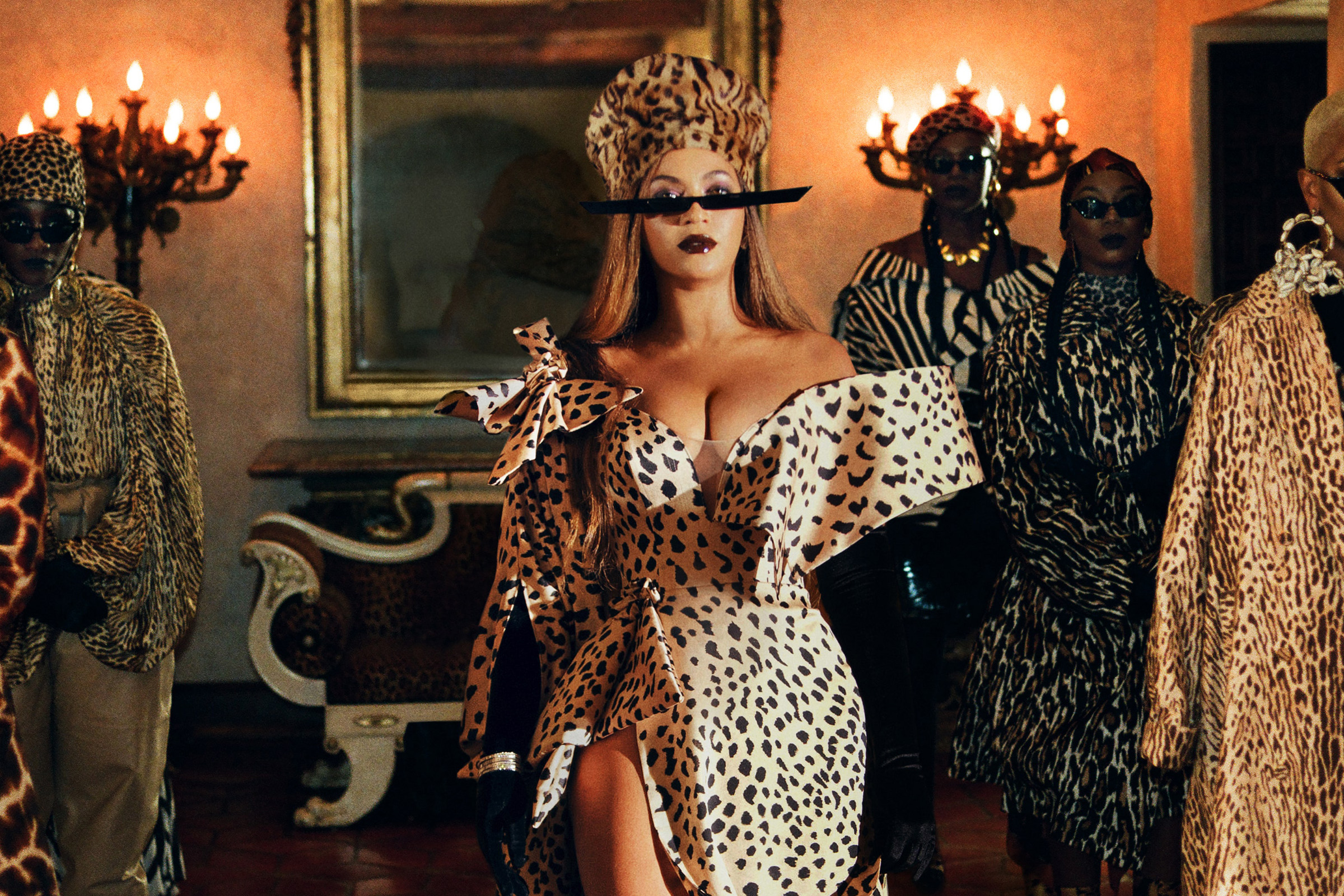
When Beyoncé released her latest visual album Black Is King on Disney+ on July 31, casual fans and the BeyHive alike were treated to a glorious feast for the eyes that featured the rich range of cultures and countries of the African continent. While the Afrocentric narrative of Black Is King draws on last year’s The Lion King: The Gift album as a framework to explore both Africa’s vast history and the African diaspora through the coming-of-age story of a young king, the aesthetic component of the film plays an equally important role, thanks to the dazzling vision of Beyoncé and her creative collaborators, especially her stylist, Zerina Akers.
“With this visual album, I wanted to present elements of Black history and African tradition, with a modern twist and a universal message, and what it truly means to find your self-identity and build a legacy,” Beyonce said when the trailer for the project dropped in early July.
Many of the most striking moments in Black Is King owe their gravitas to the bold fashion statements present in each scene that pay homage to everything from the Yoruba river goddess Oshun to Lipombo elongation. Fashion historian and curator Darnell-Jamal Lisby says that Beyoncé’s use of fashion to tell a story is far from new (one only need look as far as her Daughters of the Dust-esque visuals for Lemonade or her HBCU-inspired theme for 2018’s Beychella) — but says that with Black Is King, she very deliberately used her costumes to center the story.
“You see the entire direction of where her artistry is going in terms of using fashion more wholly to really speak to this theme of her appreciation for the various cultures of Africa and the total African diaspora,” Lisby tells TIME. “It was a nod and an homage to the diversity of Africa, that it’s not all just one conditioned picture that’s been trained in the Western world for our eyes to think about when it comes to Africa, but it gives an access point, for some who might not realize there is so much diversity within the African continent and every culture has something to give and has given to our global history.”
Below, Lisby weighed in on some of the references Beyoncé makes with her fashion in Black Is King.
Oshun, the Yoruba goddess of fertility and rivers
According to Lisby, Beyoncé references Oshun, the Yoruba goddess of fertility and rivers, multiple times in Black Is King, including in the “Spirit” music video that was released last year (the footage was incorporated in the new film), where she sports a Lafalaise Dion cowrie shell mask, and in the opening scene of the visual album, where she appears wearing a romantic sheer cream gown by Wendy Nichol. This isn’t the first time that Beyoncé has referenced Oshun either; her show-stopping Grammys performance in 2017 had a clear ode to the deity associated with love.
Beyoncé’s Lipombo-inspired Hairstyle
Beyonce’s braided hairstyle, which also made an appearance in her “Sorry” video, was inspired by the head elongation practice Lipombo that was favored by the Congo’s Mangbetu people. “Her hairstyle in that elongated hairstyle, is a hairstyle that was created because of an elongation practice called Lipombo, which was done particularly in central Africa,” Lisby said.
Nguni Cowhide
Lisby says Beyoncé’s custom Burberry cowhide look probably wasn’t just another animal print for Queen Bey. “I think that was certainly an ode to South African culture, specifically the Xhosa and the Zulu and their use of their Nguni cattle in that part of the world,” he said. “They culturally use it in very different ways; a prime example, the Zulu make their ceremonial shields out of that cowhide specifically. This could celebrate their use of that animal and how sacred it is to them.”
Headwraps like the gele and the duku
Beyonce’s many magnificent headdresses and wraps in Black Is King were extremely symbolic, according to Lisby. “The consistency of her wearing these headdresses and headbands, was like an ode to the gele. The headwrap is worn all over the continent, but in specifically Nigerian, Yoruba culture, they identity that as a gele and those in Ghana, identify it as the duku,” Lisby said. “Everybody has a different name for it, but it’s essentially the same thing and it’s worn very similarly all over the continent. And I think the consistency of her wearing it signals this respect for this traditional dress form that is one of the pillars of dress all over the continent. It’s symbol, essentially. A unified symbol even though it’s different in every country and every community.”
More Must-Reads from TIME
- Cybersecurity Experts Are Sounding the Alarm on DOGE
- Meet the 2025 Women of the Year
- The Harsh Truth About Disability Inclusion
- Why Do More Young Adults Have Cancer?
- Colman Domingo Leads With Radical Love
- How to Get Better at Doing Things Alone
- Michelle Zauner Stares Down the Darkness
Write to Cady Lang at cady.lang@timemagazine.com



